written by Jennifer Wang on Entrepreneur
During the height of her popularity, Paris Hilton once fired this retort at critics: "It will work. I am a marketing genius." Sadly, those of us who aren't as blessed must face the fact that creating a campaign that captures millions of eyeballs and produces millions in sales is about as likely as Hilton's big Hollywood comeback.
Still, each year there are marketing initiatives that hit on that winning combination of great idea, perfect timing and flawless execution. From viral campaigns to, well, virus campaigns, we've picked 10 marketing marvels of 2011, pulling out a few lessons to help you create brilliance. You're welcome--now the rest is up to you.
1. The Contagion Bacteria Billboard
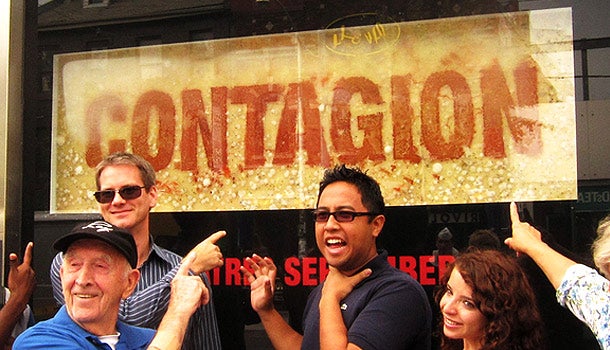
Image 1 of 10
Warner Bros. Canada, Curb Media and ad agency Lowe Roche took their promotion ofContagion, Steven Soderbergh's film about a mysterious airborne virus, to new heights of literalness. They hired a group of microbiologists and immunologists to inoculate a billboard with penicillin, mold and pigmented bacteria that grew (thanks to light and temperature controls) to spell out the name of the movie, and set it up in an abandoned storefront window in Toronto. Some passers-by were squicked, but the campaign got a ton of press, won media awards and served as inspiration to industry peers like John Laramie, the CEO of New York City-based Adstruc, a startup with a tech platform for outdoor advertising. "Pretty cool," he says. "It was probably one of those crazy ideas somebody just came up with, but planned and executed perfectly."
Lesson: Go guerrilla.
Things can go viral if you break the mold, so to speak, of a traditional campaign. Ryan Lum, creator of the blog Creative Guerilla Marketing, says the virus billboard is a great example of guerilla marketing done right. "It makes people on the street who see it wonder, and raises questions about what it's trying to promote," he says.
2. 7-Eleven's Slurpee Unity Tour
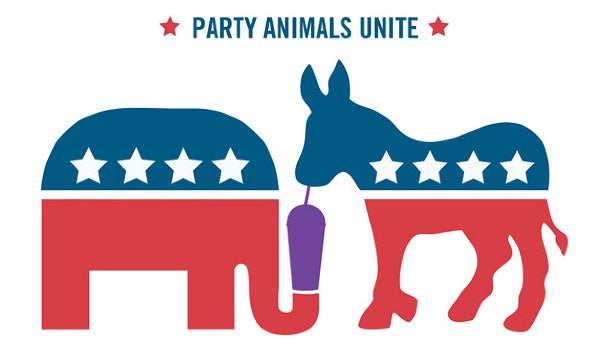
Image 2 of 10
During the contentious midterm elections, President Obama accused Republicans of "standing, watching us, sippin' on a Slurpee" while Democrats did all the work. Post-election, and in a better mood, Obama joked about hosting a Slurpee Summit at the White House with incoming Republican Speaker of the House John Boehner. 7-Eleven took this as a product endorsement from the most powerful man in the world and ran with it with all the marketing power it could muster. The convenience-store franchise tapped agency FreshWorks to create the Slurpee Unity Tour. Trucks bearing the campaign logo, picturing an elephant and a donkey sharing a Slurpee cup, made their way across America giving out samples, including a special Purple for the People Slurpee, made from a mix of the red and blue frozen treats.
Lesson: Pay attention.
You can score big if you keep up with current events and speak to what's on people's minds. "This campaign was timely, effective, entertaining, memorable," says Mark Schaefer, marketing consultant and founder of Schaefer Marketing Solutions. "They essentially turned the president into a brand advocate. How can you lose with that?"
You can score big if you keep up with current events and speak to what's on people's minds. "This campaign was timely, effective, entertaining, memorable," says Mark Schaefer, marketing consultant and founder of Schaefer Marketing Solutions. "They essentially turned the president into a brand advocate. How can you lose with that?"
Image courtesy of 7-Eleven
3. Lululemon Athletica's Ambassador Program
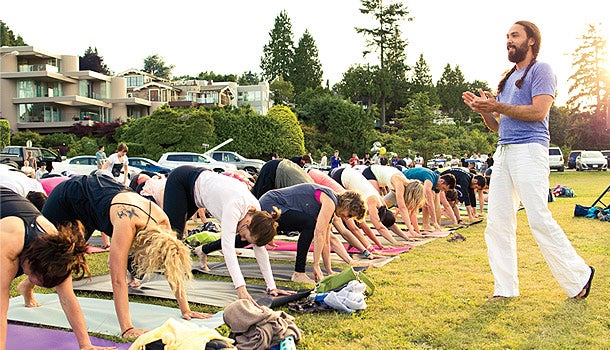
Image 3 of 10
Instead of mimicking bigger brands like Nike and Adidas by spending hundreds of millions of dollars on fancy campaigns with star athletes, Vancouver, British Columbia-based lululemon athletica went grassroots to generate buzz--and major sales of its $100 yoga pants. Since its founding in 1998, the company has implemented an ambassador program, recruiting local athletes and fitness instructors (unpaid, but given $1,000 in clothing and gear) to test products, wear the brand in front of impressionable students and lead classes in local stores. "We will go where our ambassadors tell us to go," says Eric Peterson, director of brand innovation in
new markets--a smart move, and a lucrative one, considering 2012 revenue projections are around $1 billion. The campaign, says Tom Gierasimczuk, editor-in-chief of Marketingmagazine in Canada, "strengthens the brand because the ambassadors are so accessible to the community, and show that the company is giving back to its buyers."
new markets--a smart move, and a lucrative one, considering 2012 revenue projections are around $1 billion. The campaign, says Tom Gierasimczuk, editor-in-chief of Marketingmagazine in Canada, "strengthens the brand because the ambassadors are so accessible to the community, and show that the company is giving back to its buyers."
Lesson: Woo "citizen influencers."
Find a way to turn your best customers into brand evangelists, and you've got it made. "I love that lululemon is letting customers carry their story--not movie stars, not celebrity athletes," says Schaefer, whose book on marketing via citizens, Return on Influence, is due to be published by McGraw-Hill next month. "It's one thing if a brand tells you they're great, but it's much better when another customer tells you so."
Find a way to turn your best customers into brand evangelists, and you've got it made. "I love that lululemon is letting customers carry their story--not movie stars, not celebrity athletes," says Schaefer, whose book on marketing via citizens, Return on Influence, is due to be published by McGraw-Hill next month. "It's one thing if a brand tells you they're great, but it's much better when another customer tells you so."
Image courtesy of Lululemon
4. Intel's The Museum of Me
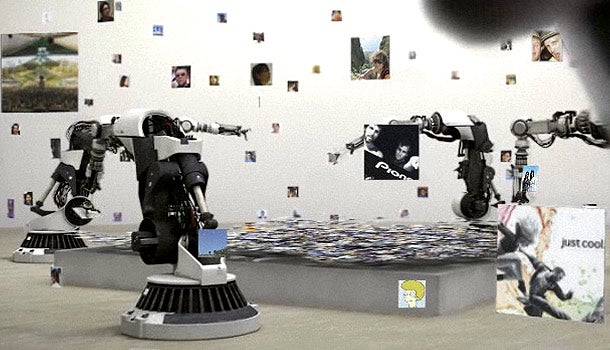
Image 4 of 10
To advertise the power of its second-generation Core processor, Intel came up with the "Visually Smart" campaign. Then, to make the connection that the product could help "visualize" a person's life, the company worked with Japanese digital agency Projector for five months to create The Museum of Me. The Facebook app accesses a user's account, scours it for photos and content and, in a matter of seconds, displays a polished short film that archives the person's life in a virtual gallery. The initiative became a viral sensation, with more than 1 million hits in five days--all achieved without any paid media promotion. "We tapped directly into people's emotions and what they cared about, and found a way to tell a personalized story," says Pam Didner, Intel's global integrated marketing manager.
Lesson: Get personal.
Obviously, relating to customers is vitally important for any marketing effort. Intel was able to "successfully communicate the human benefits of using a somewhat technical and complicated product in an easy-to-understand way and … accomplish solid, measurable business objectives," says Kent Huffman, co-publisher of Social Media Marketing Magazine.
Obviously, relating to customers is vitally important for any marketing effort. Intel was able to "successfully communicate the human benefits of using a somewhat technical and complicated product in an easy-to-understand way and … accomplish solid, measurable business objectives," says Kent Huffman, co-publisher of Social Media Marketing Magazine.
Image courtesy of Intel
5. About.me's Billboard Contest
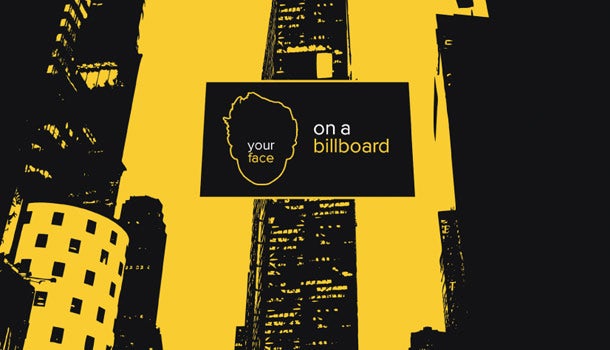
Image 5 of 10
The popular AOL-owned service about.me, which enables users to create a landing page that aggregates all their online profiles, came up with a simple but far-reaching contest to raise its profile: People who got the most votes on their about.me page would win a spot on a billboard in Times Square, plus a trip to New York to check out their prize. Motivated contestants got to work tweeting and posting to Facebook, driving five times the usual amount of visitor traffic to about.me. Some even designed YouTube video campaigns and old-fashioned paper fliers to hand out at school football games. Ryan Fujiu, who heads up about.me's partnerships and user acquisition, says the contest turned about.me users into a team of word-of-mouth marketers. "Marketing on the social web," he says, "is all about giving your users an incentive to talk about your product with their friends, co-workers and family."
Lesson: Raise the stakes.
Give your customers a reason to care, and you'll be helping them help you. Christopher Renz, co-founder of Miami-based new-media agency The brpr Group, notes that the campaign leveraged the inherent vanity of social media users--himself included--who pushed their profiles through Twitter and Facebook. "Much of the feedback I received was not about my profile, but people asking, ‘What is about.me?'" he says. "Mission accomplished for them."
Give your customers a reason to care, and you'll be helping them help you. Christopher Renz, co-founder of Miami-based new-media agency The brpr Group, notes that the campaign leveraged the inherent vanity of social media users--himself included--who pushed their profiles through Twitter and Facebook. "Much of the feedback I received was not about my profile, but people asking, ‘What is about.me?'" he says. "Mission accomplished for them."
Image courtesy of About.me
6. Spotify's U.S. launch
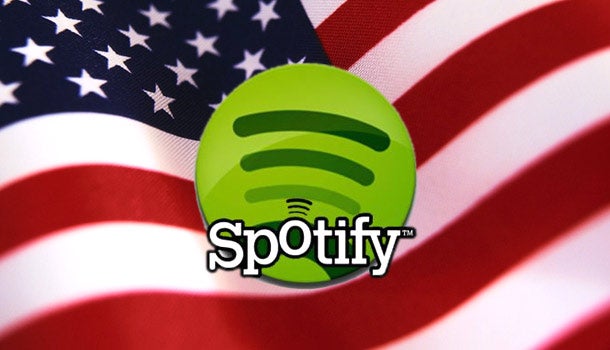
Image 6 of 10
When Spotify, a music-streaming service that boasts more than 10 million users in Europe, arrived stateside last summer, it deployed a launch strategy that catapulted it to the top of an extremely competitive playing field populated by the likes of Pandora, Rhapsody and Google Music. First the company focused on getting early adopters and influencers with high Klout scores to "tell everyone they know." Then there were the limited beta invites, which controlled the number of free subscriptions and elevated demand for the service. When September rolled around, Spotify joined forces with Facebook. By now, the only holdouts are probably people too afraid to out themselves as Taylor Swift fans to everyone on their social networks.
Lesson: Be exclusive.
Two words: invitation only. "Those invites were in high demand, and it got users clamoring to be a part of the cool crowd," Renz says. Equally important, Schaefer adds, was the campaign's sustainability: "When Spotify launched, I was surrounded by buzz from all directions--friends, my kids, Twitter--and it didn't let up, because the product delivered."
Two words: invitation only. "Those invites were in high demand, and it got users clamoring to be a part of the cool crowd," Renz says. Equally important, Schaefer adds, was the campaign's sustainability: "When Spotify launched, I was surrounded by buzz from all directions--friends, my kids, Twitter--and it didn't let up, because the product delivered."
Image courtesy of Spotify
7. Method's Commercial
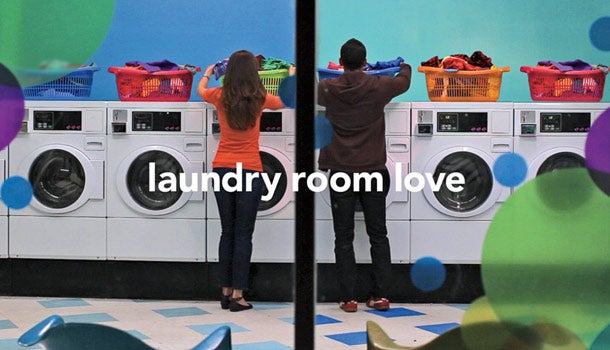
Image 7 of 10
When Method, a San Francisco-based producer of eco-friendly cleaning products, entered the laundry detergent market, it seemed a Herculean task to change buying habits and convince Tide users that a small, 20-ounce bottle could do 50 loads of laundry--all with a puny marketing budget of $200,000. Method co-founder and brand architect Eric Ryan decided the best way would be to enlist the help of customers. The company hired media agency Mekanism to produce a crowdsourced commercial, asking people to record themselves performing specific actions from a storyboard and submit those clips for a final edit. A total of 332 consumers participated, along with those who showed up for an open casting call. When the infinitely watchable video aired, it was the week's 93rd most-viewed YouTube clip and resulted in a 68 percent increase in the number of Method's Facebook fans. Brpr's Renz, who has worked with Method in the past, says the beauty of crowdsourcing here meant there was a built-in distribution network for the commercial once it was complete.
Lesson: Have a conversation.
Talk to your customers; a brand that engages in dialogue will do better than one that prefers to lecture. "As a mission-driven brand, we have great consumer advocates," Ryan says.
Talk to your customers; a brand that engages in dialogue will do better than one that prefers to lecture. "As a mission-driven brand, we have great consumer advocates," Ryan says.
Image courtesy of Method
8. Perrier's YouTube campaign
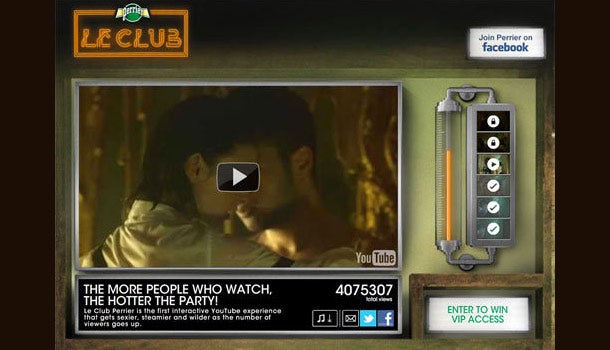
Image 8 of 10
After keeping a low profile in North America for more than a dozen years, Perrier made a big splash in 2011 with an edgy digital and social media push that captured the attention of a younger demographic. With the help of Ogilvy & Mather and ZenithOptimedia, the beverage company made a series of YouTube videos under its "Melting" campaign called "Le Club Perrier," featuring scantily clad dancers partying in a melting nightclub. The scene, it promised, would become "sexier, steamier and wilder" as more viewers tuned in and additional videos were unlocked. More than 11.5 million viewers took the (rather attractive) bait.
Lesson: Make it share-worthy.
It's all about the "pass-along value" in social media. "Rather than putting the videos out there and asking people to send [them] around, there was enough incentive for them to start clicking on their own," says Natalie Zmuda, an Advertising Age reporter. "You can make creative, beautiful, interesting things that don't go anywhere if people--especially young people--don't feel inclined to show it to their friends."
It's all about the "pass-along value" in social media. "Rather than putting the videos out there and asking people to send [them] around, there was enough incentive for them to start clicking on their own," says Natalie Zmuda, an Advertising Age reporter. "You can make creative, beautiful, interesting things that don't go anywhere if people--especially young people--don't feel inclined to show it to their friends."
Image courtesy of Perrier
9. Apple's Siri spots
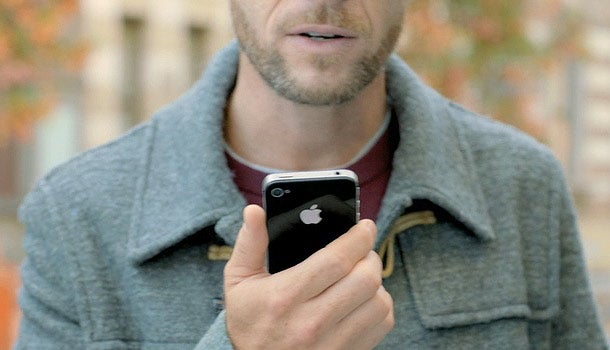
Image 9 of 10
No marketing-brilliance list worth its salt would leave off Apple and longtime agency partner TBWA. In 2011, the release of the iPhone 4 kicked off with commercials starring Siri, a voice-driven assistant who takes dictation, schedules appointments, sends e-mails, searches the web and directs users to the nearest Starbucks. One 30-second TV spot ran through a dozen scenarios demonstrating how Siri works for everyone from soccer moms to CEOs, and showed Apple products doing what theydo best: making your life easier. (Plus, making you shell out for things you never knew you needed.)
Lesson: Solve a problem.
It's always a good bet to focus on how a product or service helps customers, rather than bragging about your best features, no matter how cool they are. "Whether the target audience is a consumer or another business, you have to explain how you can fit into work flow and improve lifestyle," says John Obrecht, editor of marketing strategy magazine BtoB.
It's always a good bet to focus on how a product or service helps customers, rather than bragging about your best features, no matter how cool they are. "Whether the target audience is a consumer or another business, you have to explain how you can fit into work flow and improve lifestyle," says John Obrecht, editor of marketing strategy magazine BtoB.
Image courtesy of Apple
10. Disney's Dream Portraits
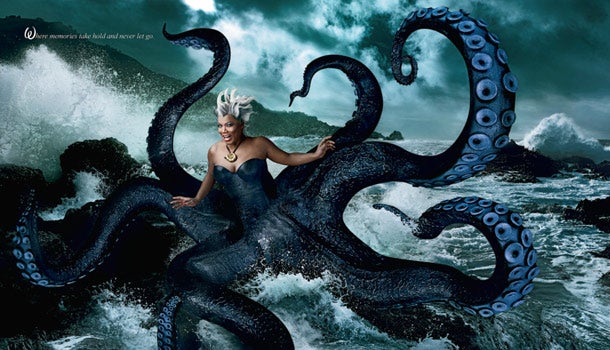
Image 10 of 10
Since 2007, Disney has blurred the lines between art, advertising and editorial content with its "Dream Portraits" campaign. The company books A-list photographer Annie Leibovitz to capture some of the world's most beloved stars as legendary Disney characters. The latest: Penelope Cruz as wide-eyed Belle and Jeff Bridges as the transformed Beast, Queen Latifah as the villainous Ursula from The Little Mermaid and Olivia Wilde as the Evil Queen in Snow White.
"It's a big, big idea that took a lot of soul-searching and deep analysis of the brand. It's executed simply and deeply, incorporating actors, who are agents of escape that epitomize fantasy," says Marketing magazine's Gierasimczuk.
Lesson: Knock it out of the park.
Few companies can rival Disney's ad spend, but no matter your budget, a traditional, well-executed campaign with one stunning narrative can be more effective than one that's fragmented across contests, Facebook fan pages and a multitude of other channels. According to Gierasimczuk, the Leibovitz portraits, like Absolut Vodka's classic ads, demonstrate how the best concepts can lend themselves to long-running campaigns.
Few companies can rival Disney's ad spend, but no matter your budget, a traditional, well-executed campaign with one stunning narrative can be more effective than one that's fragmented across contests, Facebook fan pages and a multitude of other channels. According to Gierasimczuk, the Leibovitz portraits, like Absolut Vodka's classic ads, demonstrate how the best concepts can lend themselves to long-running campaigns.
Photo © Annie Leibovitz for Disney Parks
No comments:
Post a Comment